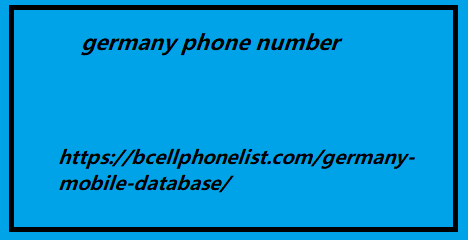Meta Description: Learn how to use JavaScript await keyword to manage asynchronous functions efficiently and improve the performance of your code.
Introduction
Are you struggling to handle asynchronous JavaScript functions gracefully? If so, you’re not alone. Dealing with asynchronous operations can Beginner’s Guide be tricky, but the javascript await keyword is here to help. In this article, we’ll explore what the javascript await keyword is, how it works, and why it’s essential for writing clean and efficient JavaScript code.
What is the JavaScript Await Keyword?
The javascript await keyword is used to pause the germany phone number execution of an asynchronous function until a Promise is settled. This allows you to write asynchronous code that looks and behaves more like synchronous code, making your code easier to read and maintain. When you use the javascript await keyword, the rest of the code in the function will continue to execute while waiting for the Promise to resolve or reject. This can help you avoid callback hell and simplify your code structure.
How Does the JavaScript Await Keyword Work?
When you add the javascript await keyword before a Promise, the function will pause execution at that line until the Promise settles. If the Promise is resolved, the javascript await keyword will return the resolved value. If the Promise is rejected, the javascript await keyword will throw an error, which you can catch using a try…catch block. This allows you to handle errors in asynchronous code more easily and gracefully.
Why is the JavaScript Await Keyword Important?

The javascript await keyword is essential for writing Afghanistan Phone Number List clean, efficient, and maintainable JavaScript code. By using javascript await, you can avoid callback hell, manage asynchronous operations more effectively, and improve the performance of your code. Instead of relying on nested callbacks or complicated Promise chains, you can use javascript await to write asynchronous code that is easy to read and debug. This can save you time and effort in the long run, making your code more robust and reliable.
How to Use the JavaScript Await Keyword
To use the javascript await keyword, you need to define an asynchronous function using the async keyword. Inside the asynchronous function, you can use the javascript await keyword before any Promise you want to wait for. Here’s an example:
async function fetchData() {
This allows you to fetch data from an API asynchronously and log the data to the console when it’s available.
Conclusion
In conclusion, the javascript await keyword is a powerful tool for managing asynchronous operations in JavaScript. So why wait? Start using javascript await in your projects today and take your JavaScript skills to the next level!

